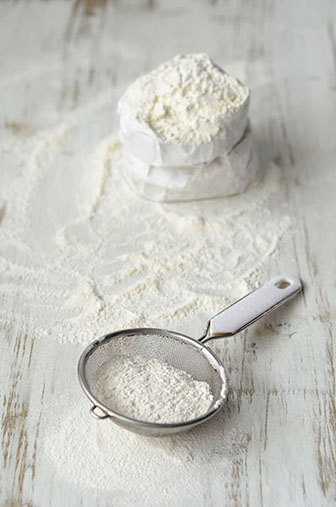SciGen Teacher Dashboard
Unit T1
Observation & Inference
Flour or Rat Poison?
Going from Observations to Inferences
Qualitative vs. Quantitative
Identify Powders
by Observing
 Being able to carefully make observations in science is very important. You might need to figure out what a mystery substance is or just tell your friend what the weather is like outside. You can make qualitative observations like color, shape, and smell. To learn more, sometimes you might have to make quantitative observations like weight or temperature. By observing closely and then making inferences, you can find out all kinds of things about the world. That’s what scientists do.
Being able to carefully make observations in science is very important. You might need to figure out what a mystery substance is or just tell your friend what the weather is like outside. You can make qualitative observations like color, shape, and smell. To learn more, sometimes you might have to make quantitative observations like weight or temperature. By observing closely and then making inferences, you can find out all kinds of things about the world. That’s what scientists do.
In this unit, students learn about making both qualitative and quantitative observations and about distinguishing an observation from an inference. Students have a hands-on opportunity to practice making observations and inferences during a lab activity.
Activities
 Scene: Flour or Rat Poison
Scene: Flour or Rat Poison
Students begin to learn the scientific language used when making observations and inferences. Students demonstrate careful reading by identifying accurate details. Students consider the perspectives that each character brings to the situation and determine which perspective is most similar to their own.
Duration: Approximately 50 minutes
 Lesson: Going from Observations to Inferences
Lesson: Going from Observations to Inferences
Students review the role of the five senses in making observations. Students practice making inferences based on observations. Students learn the difference between qualitative and quantitative observations. Students practice making both qualitative and quantitative observations.
Duration: Approximately 30 minutes
 Lesson: Qualitative vs. Quantitative
Lesson: Qualitative vs. Quantitative
Students begin to learn the scientific language used when making observations and inferences. Students demonstrate careful reading by identifying accurate details qualitatively and quantitatively.
Duration: Approximately 30 minutes
 Lab: Identify Powders by Observing
Lab: Identify Powders by Observing
The mystery powders activity is designed to have students use careful observations in order to solve a problem. It builds on the problem presented in the launch text, in which kids must determine the identity of the ingredients in the cupboard. The first part involves only observations of the powders in order to determine their identities.
Duration: Approximately 120 minutes
Teacher Tune-ups
Student View of Visuals and Activities
Some teachers prefer to have students view the slides and other visual assets in this unit directly instead of projecting them in class. Below is a web page to share with students with links to the same items within in the teacher lesson plans, but without the explanatory text for the teacher.
Original SciGen Unit
This unit has been adapted from "6.1 Did you notice that?" in the Word Generation program led by Catherine Snow (Harvard University) through a SERP collaboration with the Boston Public Schools and other districts in Massachusetts and Maryland.
PDFs of that earlier unit's teacher and student editions are available at the Science Generation Download Center.
Unit T1 Focus Words
compare
verb – to examine two or more things to tell how they are the same and how they are different
In English class, we compared the main characters by using a Venn diagram.
contrast
verb – to compare two or more things, focusing only on the differences
The essay question on the quiz asked us to contrast the two poems: one was a happy, upbeat poem and the other was a sad, somber poem.
noun – the difference between two or more things
Miguel thought the quiz was really easy; in contrast, Shayla thought the quiz was impossible!
substance
noun – a physical material that you can see and touch, like a powder or a gel
One of the most common substances that detectives collect at crime scenes is blood because it contains DNA.
inference
noun – a conclusion based on evidence
Sven made an inference that his friends were home because he could see lights on in their apartment window.
qualitative
adjective – describes observations that do not have numbers; for example: size, color, shape
In science class, my partner Javon collected qualitative data by writing down the color and texture of the three different substances.
quantitative
adjective – describes observations that use numbers; for example: weight, time, height, volume
I collected quantitative data by measuring the volume and weight of the three different substances.
BETA Version - Please send comments and corrections to info@serpinstitute.org